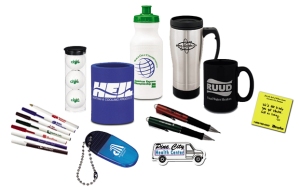
A lot of new Affiliate marketers commit mistakes which are sometimes repeated over and over again. But for super affiliates they’ve learned not to make the mistake of repeating the following errors:
1. Spam- is unsolicited email. This would be very time consuming and irritating. Watch out for unrealistic email promotions that offer deals for ‘leads’, i.e. $99.95 for 500M emails. Sending email to those addresses is spamming pure and simple.
2. Posting Ads on Forums- similar with the concept of spamming. Posting Advertising on message boards gets the poster band. Avoid acting in ways that upset the board owners.
3. No Market Research– don’t be that stupid to build a site and sell products without undergoing market research. Test the waters before investing time and money into a new product.
4. Using Merchant Advertising Copy- be competitive and creative enough to innovate or improve the advertising copy. Do not rely on the copy prepared by the merchant.Successful affiliates set themselves apart from other affiliates promoting the same products.
5. Copyright Infringement- Always ask permission to use graphic images or text found on another site. I bet you don’t want to find an exact copy of your site on someone else’s domain.
6. Submitting to FFA’s– there are negative effects in submitting sites for free for all sites. Most FFA’s have such low rankings, it will drag your ranking down with it by association. Bad move.
7. Shouting- Using all capital letters in text or correspondence is symbolic of shouting, and shouting at people just makes them leave.
8. Slow or No Response to Visitor eMails- Visitors don’t want to wait long. If a visitor takes the time to send a question by email to an affiliate and the affilate doesn’t reply in a timely manner. The visitor will go somewhere else.
9. Overuse of Pop-Ups- Getting hit by multiple pop-ups is annoying. Many surfers will choose to close their browser completely rather than click ‘x’ 20 times. No browser – no sale.
10. Using Free Webhosts & Free Email Accounts- Using free hosts and email accounts looks cheesy and loses sales.
11. No Site Outline- Without a blueprint or a map of a project, it will take much longer, cost more money and may end elsewhere than intended. Simplify the project by having a plan.
12. No Opt-in Newsletter- Without an opt-in list, you cannot contact visitors when they go. Those who sign up to receive your newsletters or ads are telling you that they’re interested in the products you offer.
13. Keeping Poor or No Records- keep track of all your business activities. This is very basic if you are having a business, even in online marketing.
14.Building a Mall- As a main or only site, unfocused mall sites don’t get traffic from the engines, and they don’t convert well to sales. Highly focused theme sites attract traffic and sales.
15. Pay to Advertise Offline- This is a waste of money. Most people don’t type in a URL on their computer, that they’ve seen in the newspaper or magazine.
16.Banner Ads Farming- Lengthy pages of animated graphic banners ads simply soak up bandwidth.
17. Competition Bashing- work professionally.Speaking ill of others only gives the basher a bad reputation. Mind your own business and do your own business.
18. Advertising Product Prices- If the price has changed, the inconsistency will cause the visitor to question everything else that he or she reads about the product.
19. Time Sensitive Advertising- Time sensitive advertising is best used only in email advertising campaigns.Banners or text links that expire are guaranteed to eventually send your visitor to a broken link or show a broken graphic on your page.
20. ‘Leaky’ Links- Do not bring visitors to your site, then send them to another site through anything other than an affiliate link that pays.
21. Affiliate Links on the Homepage- Give them a chance to browse, sign up for your newsletter and decide that they’d like to come back to your place.
22. Doing it All Yourself- Don’t force your self too much on the things you are not familiar or capable of. Save time and avoid frustration in areas that don’t interest you by hiring someone who is an expert.
23. Not Investing in Education- Technology changes with amazing speed. To keep up on this rapidly evolving industry, you must invest time and money in research.
24. Failing to Act- Be persistent enough. Act! you’ll never know and enjoy the incredible rewards waiting just for you!
25. No Persistence- Again, be persistent enough to face the hardships and trials along the way. It will be hard if you think it would be hard. Think positively.Persistence is the single most important factor in determining success online or off. Be persistent and be successful!





